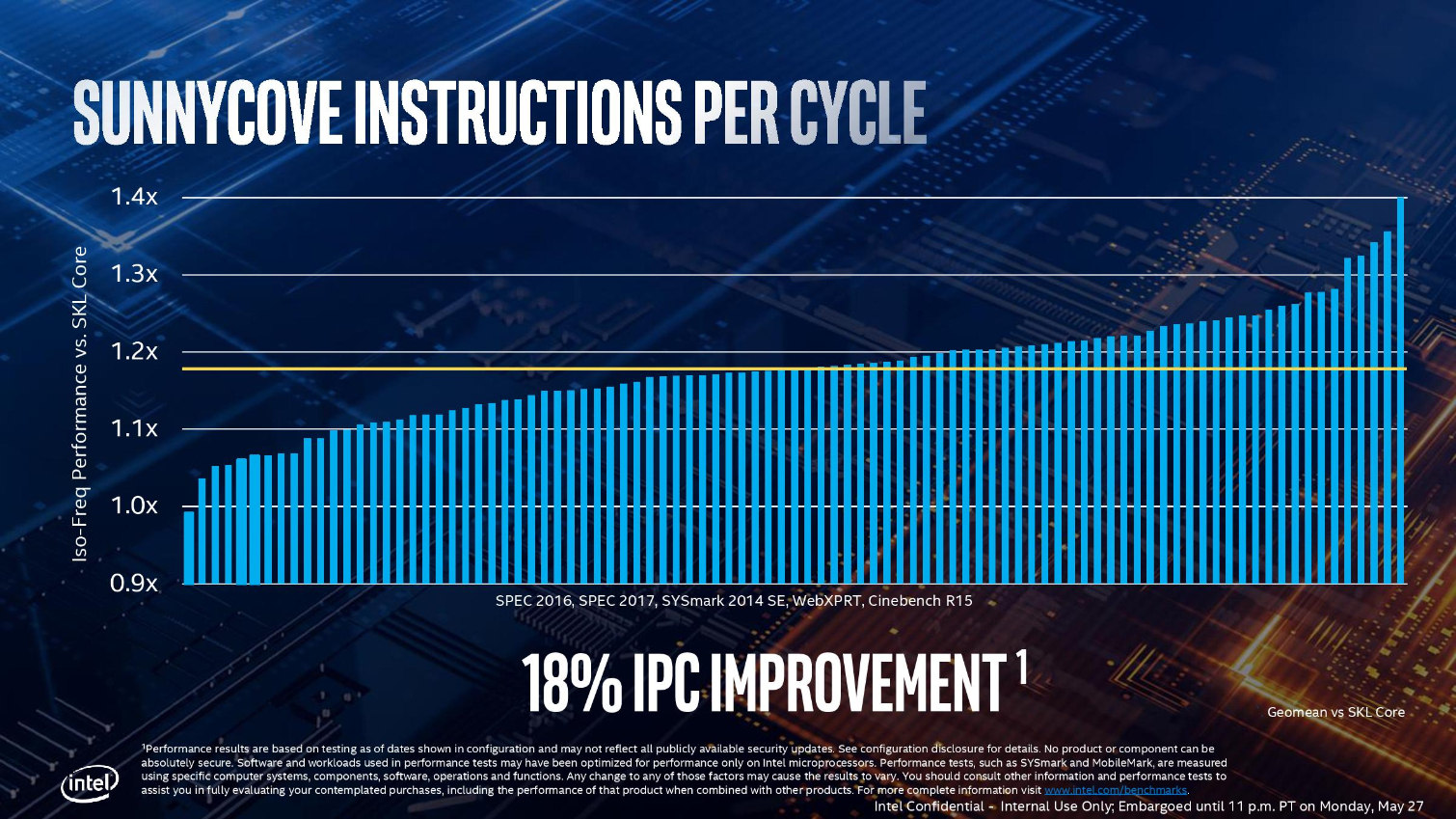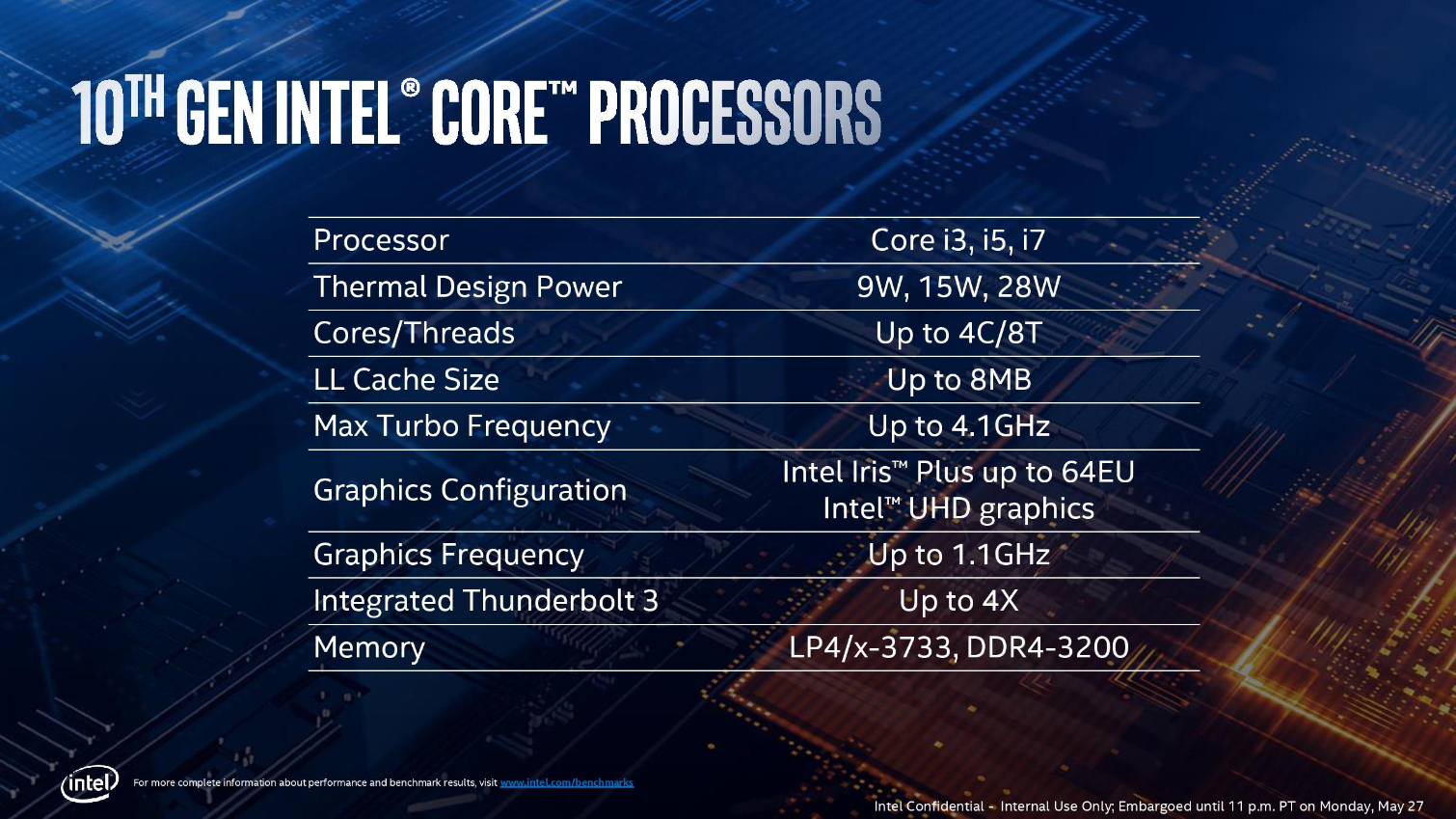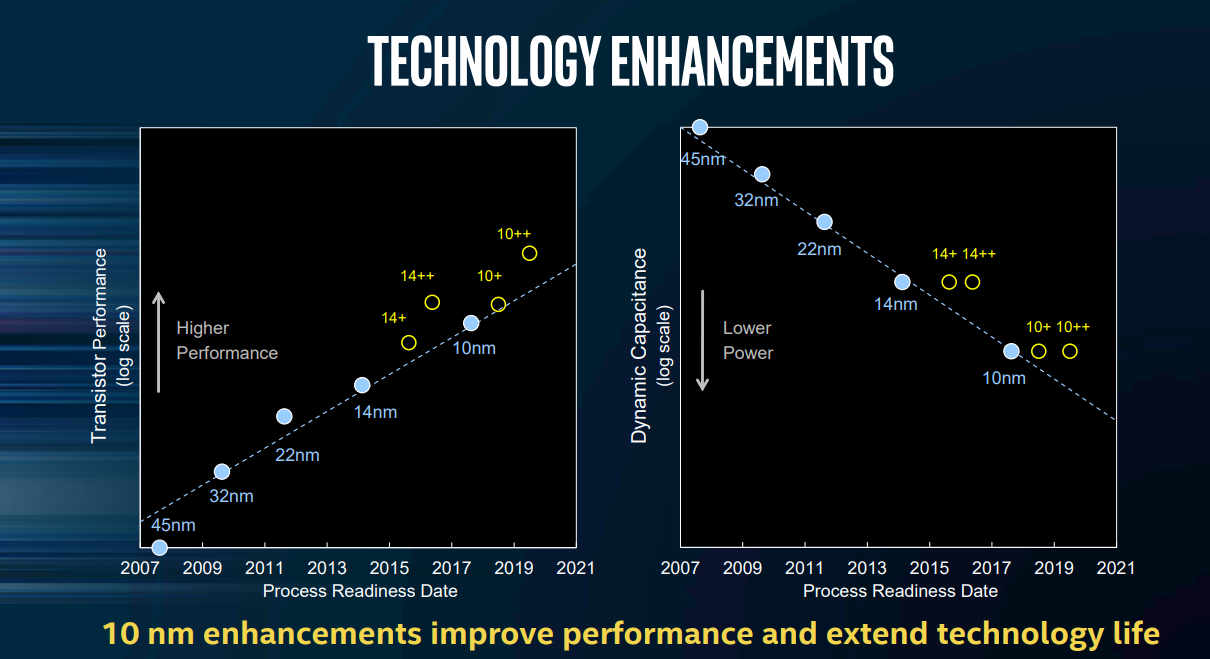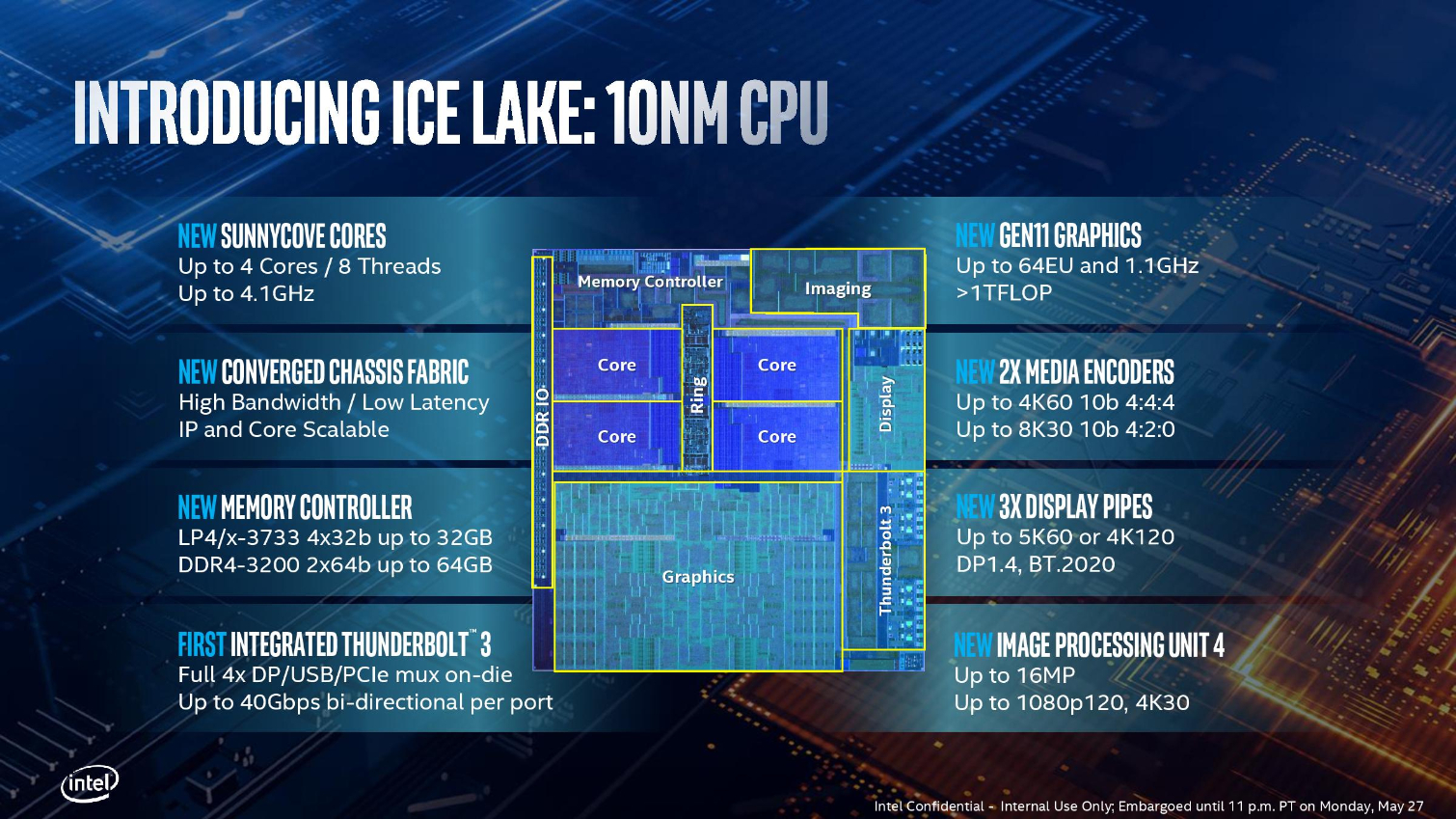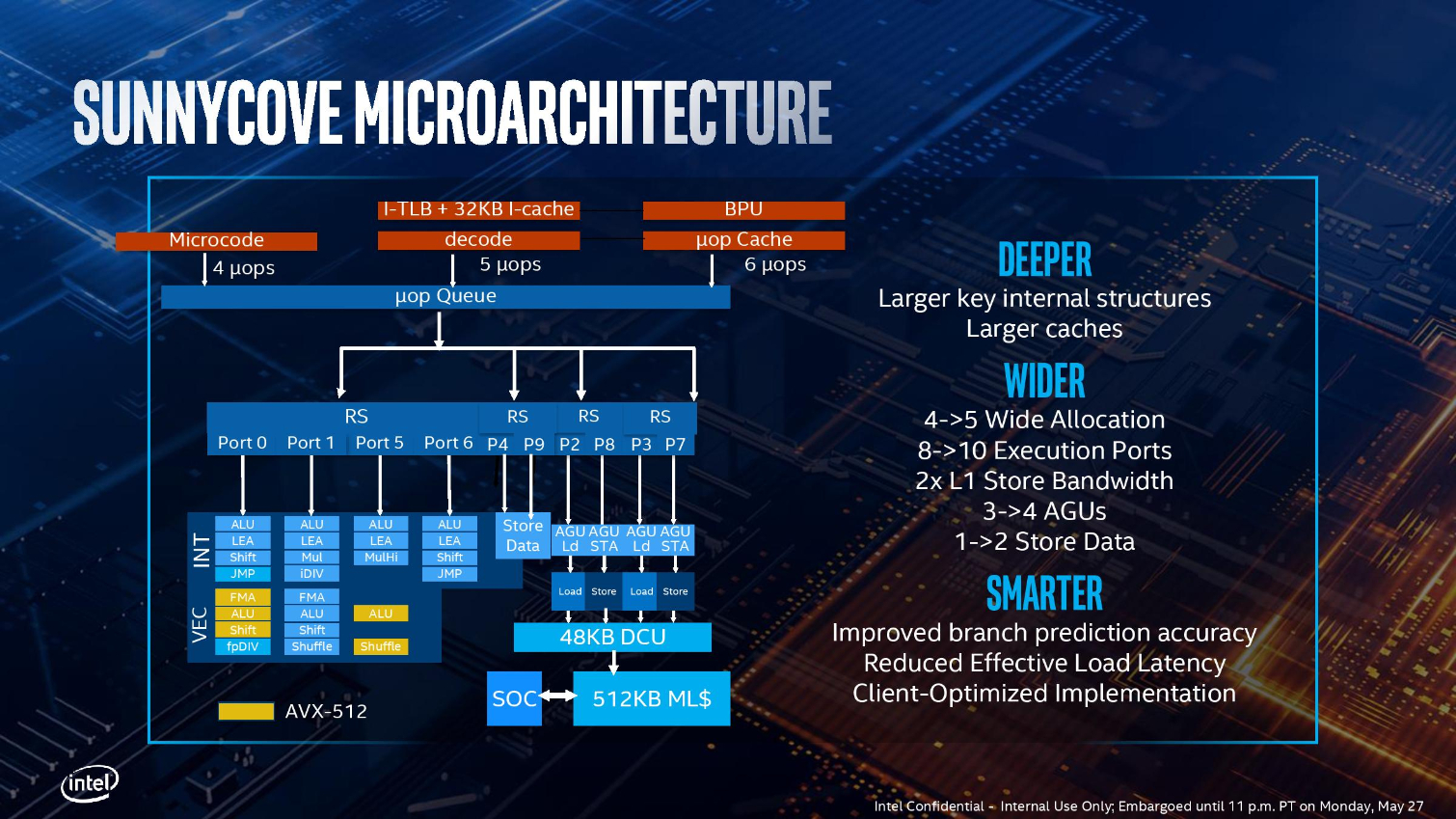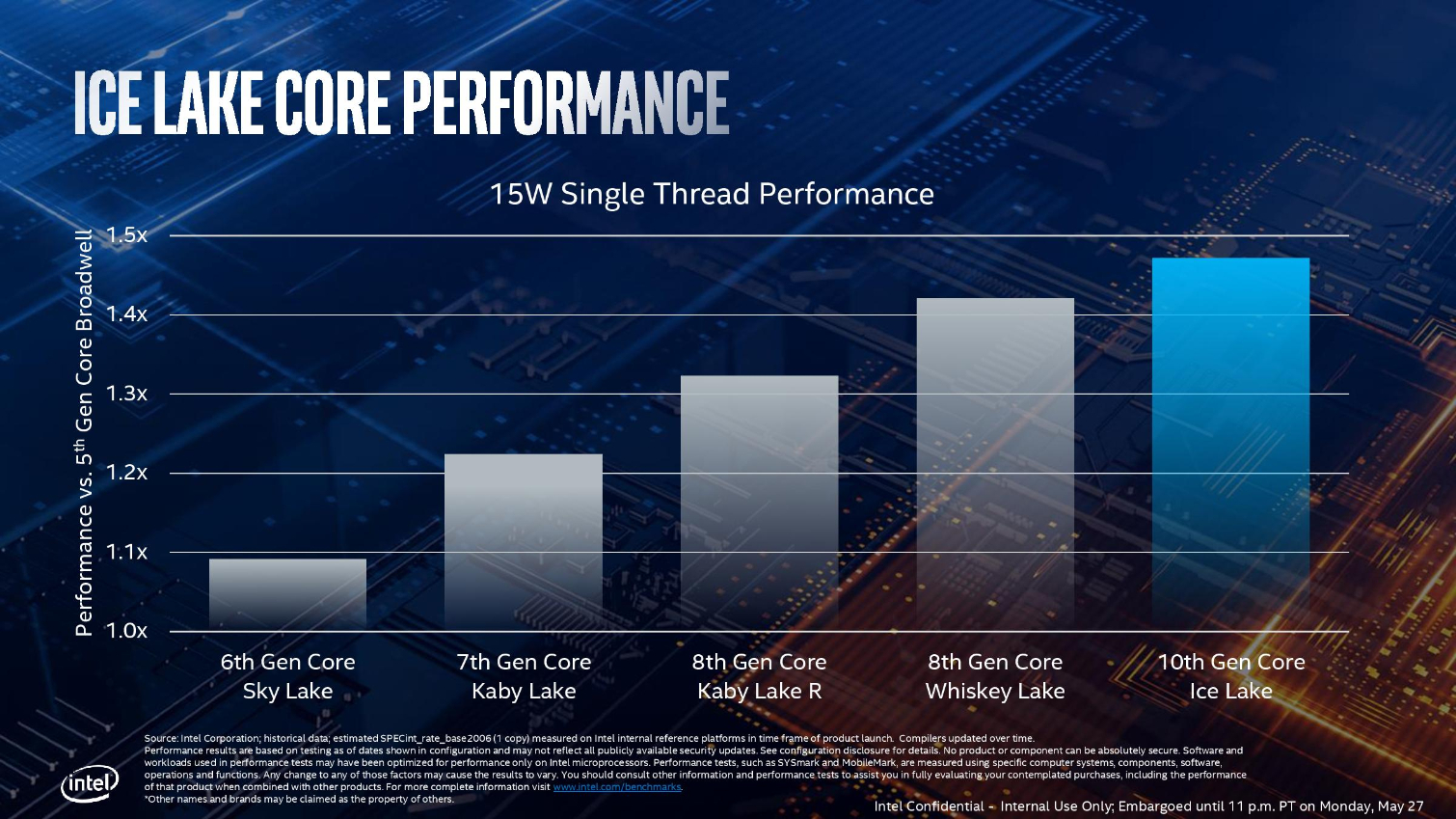Intel Unveils 10th-Gen Core Chips, 10nm Ice Lake, 18% IPC Improvement, Sunny Cove Cores, Gen11 Graphics, Thunderbolt 3
Intel's traditional two-year cadence between new architectures was famously delayed for four years as the company struggled to bring its 10nm node online, but now Intel has finally whipped the covers off its 10nm 10th-Generation Core processors, codename Ice Lake, that are finally shipping.
Ice Lake's headline feature is an 18% increase in average instruction per cycle (IPC) throughput compared to the aging Skylake architecture, but the gains are even higher in some applications, with peaks in the 30 to 40% range for some types of workloads (albeit lower gains in others).
The boosted performance comes courtesy of Intel's new Sunny Cove cores and is a needed addition to help fight off the resurgent AMD, which recently touted a 15% improvement in IPC with its Zen microarchitecture on the 7nm process. AMD claims that its new third-gen Ryzen products have exceeded Intel's Skylake single-core performance, long the hallmark of Intel's dominating performance, albeit by small 1 to 3% margins. Given Intel's large step forward, it looks like the Ice Lake chips can restore Intel's single-core performance lead.
Intel also whipped in its new Gen11 graphics engine, which Intel says will offer up to a 2X performance improvement and claims will take the performance crown from AMD's APUs. Intel has also integrated new DLBoost capabilities that offer up to a 2.5x performance with AI workloads through new vector instructions. Other enhancements, like up to four Thunderbolt 3 ports with four times the throughput of USB 3 apiece, Wi-Fi 6 with performance up to gigabit speeds, and USB-C all converge to make the Ice Lake processors a compelling platform upgrade.
The Ice Lake lineup is destined for notebooks and other thin and light devices. The chips will come in U- and Y-series variants that span the 9W, 15W and 25W TDP ranges. These 10th-generation processors will come with up to four cores and eight threads and 8BM of L3 cache.
Intel has also bumped up dual-channel memory support to 4X32 LPDDR4X-3733 and DDR4-3200, which is a big improvement to ~60 GB/s of throughput that will help boost graphics performance. The Gen11 graphics will reach up to 1.1 GHz and also come in Iris Pro variants.
The Ice Lake processors come with a maximum turbo frequency of 4.1 GHz, which is a notable step backwards from the 4.6Ghz peak boost clock speed of the previous-gen chips. That implies Intel still hasn't fully optimized the 10nm node, though the company has communicated in the past that the first iterations of the 10nm process would come with lower peak performance than the mature 14nm++ processors, as shown on the left hand side of this chart Intel presented at its manufacturing day in 2017. You'll notice Intel didn't meet the dates listed, but the fundamental message behind the problems with scaling down to smaller nodes is clear.
Get Tom's Hardware's best news and in-depth reviews, straight to your inbox.
Intel has declined to share a list of specific products at this time, which is a significant departure from its standard operating procedure. Intel tells us that it will share the full specifications when the products come to market, which we just learned is today. The company expects over 30 designs, each with multiple variations, to come to market.
We do know that the chips will carry 10-series branding, so the product names will be a bit confusing. Intel has signified each generation with a four-digit identifier, such as the 9th-gen core chips with a -9xxxU branding, but the 10th-gen chips bring about an extra digit, such as an 10xxxU identifier.
Ice Lake Processors
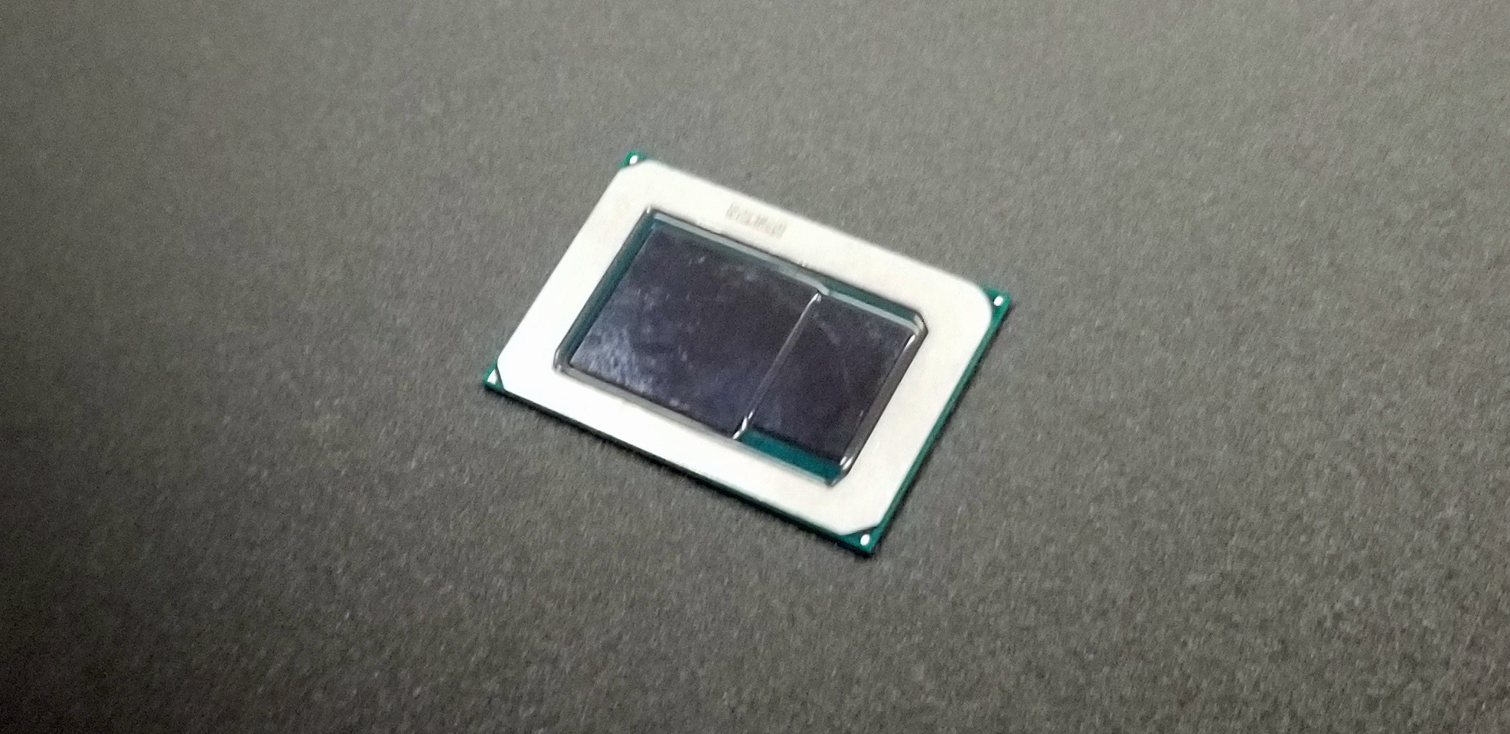

Here we can see Intel's Y- and U-series chip that operate at 9W and 15W, respectively, but Intel isn't commenting on the maximum power draw of the processors (PL2). Intel has introduced a new thin magnetic inductor array that helps the company provide greater efficiency at low power, yet still extend up the full dynamic power range when needed.
Intel also introduced Dynamic Tuning 2.0, a new machine learning-based power delivery technique that uses software running inside the operating system to adjust power dynamically based upon the users' needs. This software runs in both Windows and Linux, but it isn't clear if it comes as a standalone software package or as a driver. The big change with this new power management scheme is that it doesn't rely on pre-defined power curves that are created at the factory, instead, the system learns the users' behavior and adjusts power based on the type of workloads that are currently running.
Ice Lake Design
Here we can see the various improvements that Intel has made to the design, and just how much larger the Gen11 graphics are compared to previous-gen processors. We also see that the Thunderbolt 3 implementation consumes quite a bit of display area, and that the cores are still connected via a ring bus fabric.
Sunny Cove Microarchitecture
Boosting IPC throughput by an average of 15 to 18% is a tall order that requires significant design efforts, but Intel's Sunny Cove microarchitecture delivers a wide range of improvements. Intel can now process four or six micro-ops (uops) per clock courtesy of a 50% larger micro-op cache, and the company also expanded the L1 data cache from 32KB to 48KB and doubled the L2 cache to 512KB.
Other metrics, such as the out of order (OoO) window, were widened, while in-flight loads and stores capability are both increased tremendously.
Intel already covered part of the microarchitecture during its architecture day, which you can see here, but expanded on the block diagram. Here we can see how the instructions feed in from the front end (red blocks at the top of the diagram) into the larger micro-op cache at four to six operations per cycle, which then feeds an expanded back end that can handle more uOps it can store and execute. Intel has also integrated AVX-512 into a different location in the architecture (yellow blocks), increased the L1 cache for the first time in a decade, and doubled the L2 cache. The processor has one 512- and one 256-bit FMA unit.
Ice Lake IPC Improvements
Intel improved the instructions per cycle (IPC) throughput significantly, claiming an average gain of 15 to 18%. The company measured the improvements at the same core clock and memory speed, and with the same software, against the previous-gen microarchitectures in a number of workloads (second image above) to derive its IPC measurements.
Ice Lake 14nm PCH
Intel also improved the PCH to include a FIVR (Fully Integrated Voltage Regulator) that reduces the amount of space (by 15%) that OEMs have to dedicate to power delivery rails (now only five). That eventually results in smaller motherboards, and thus smaller devices. A Wi-Fi 6 MAC is also integrate on the chipset, but it still requires a PHY for operation, thus reducing costs and avoiding additional FCC requirements for the chipset. Intel offers its own CNVi module as the other half of the integrated solution.
Intel has left the PCH on the mature 14nm process, but it comes with a number of expanded I/O capabilities and an improved audio DSP that enables Wake-On-Voice support and enhanced voice recognition for Alexa and Cortana, along with other voice-activated personal assistants. The new audio DSP supports several independent voice-activated applications simultaneously while the PC is in a low power state.
TitanIntel's DL boost consists of new vecor instructions that boost INT8 performance significantly. Intel is investing heavily in enabling developers to take advantage of its next-gen graphics engine for AI workloads and says we can expect a wide uptake of AI-acceleration for desktop PCs over the coming years.
Intel Gen11 Graphics
Intel's Gen11 graphics are well known. This week, the company released in-depth benchmarks to highlight the massive gen-on-gen performance gains and claims it has taken the graphics performance leadership crown from AMD's historically-leading APUs. You can read more about the Gen11 graphics architecture here, but from a high level, it bumps the number of execution units (EUs) from 24 up to 64 within the same power envelope. It also comes with a number of finer-grained improvements to the architecture that Intel says delivers one teraflop of 32-bit and two teraflops of 16-bit floating point performance in a low power envelope.

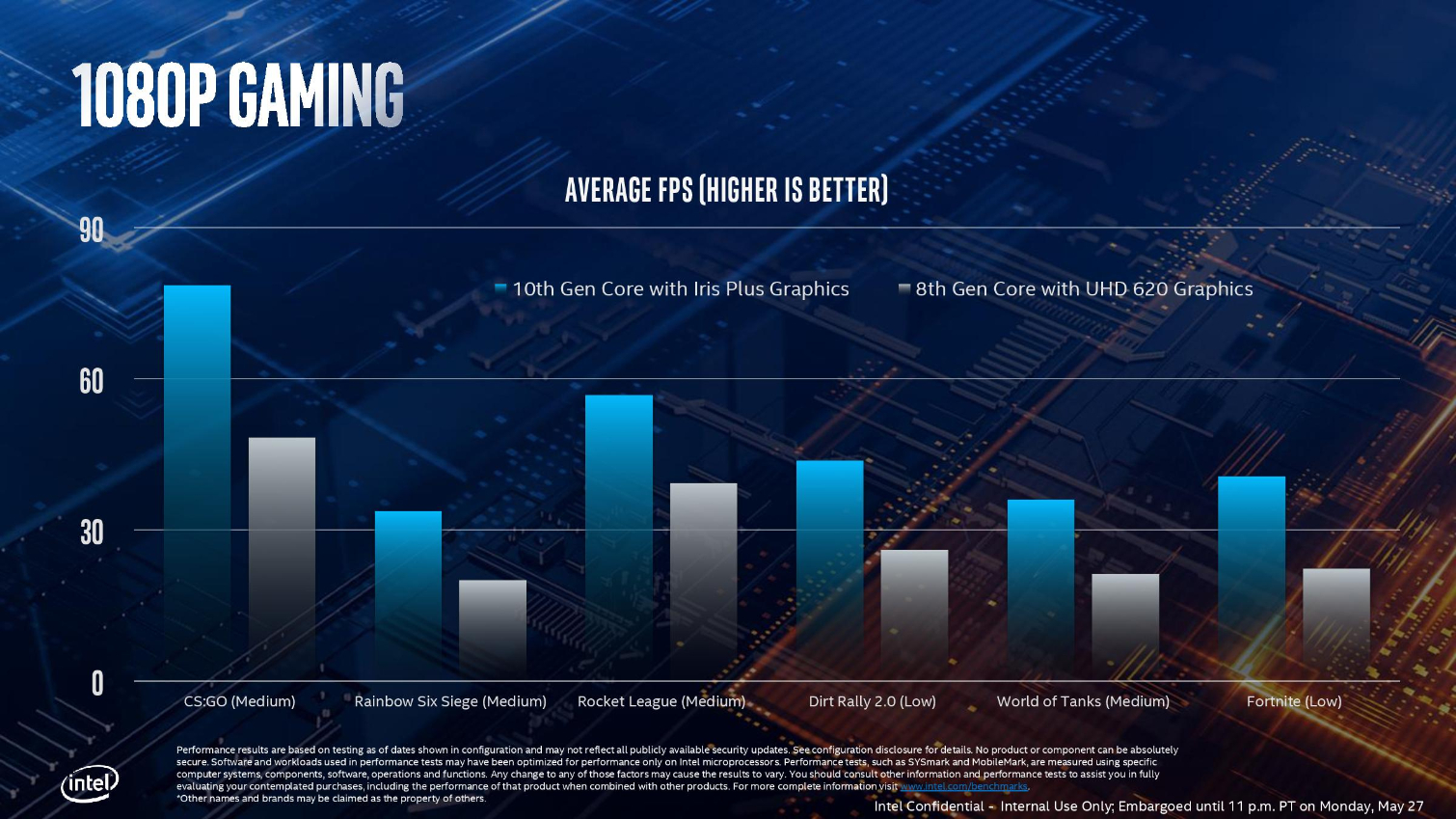
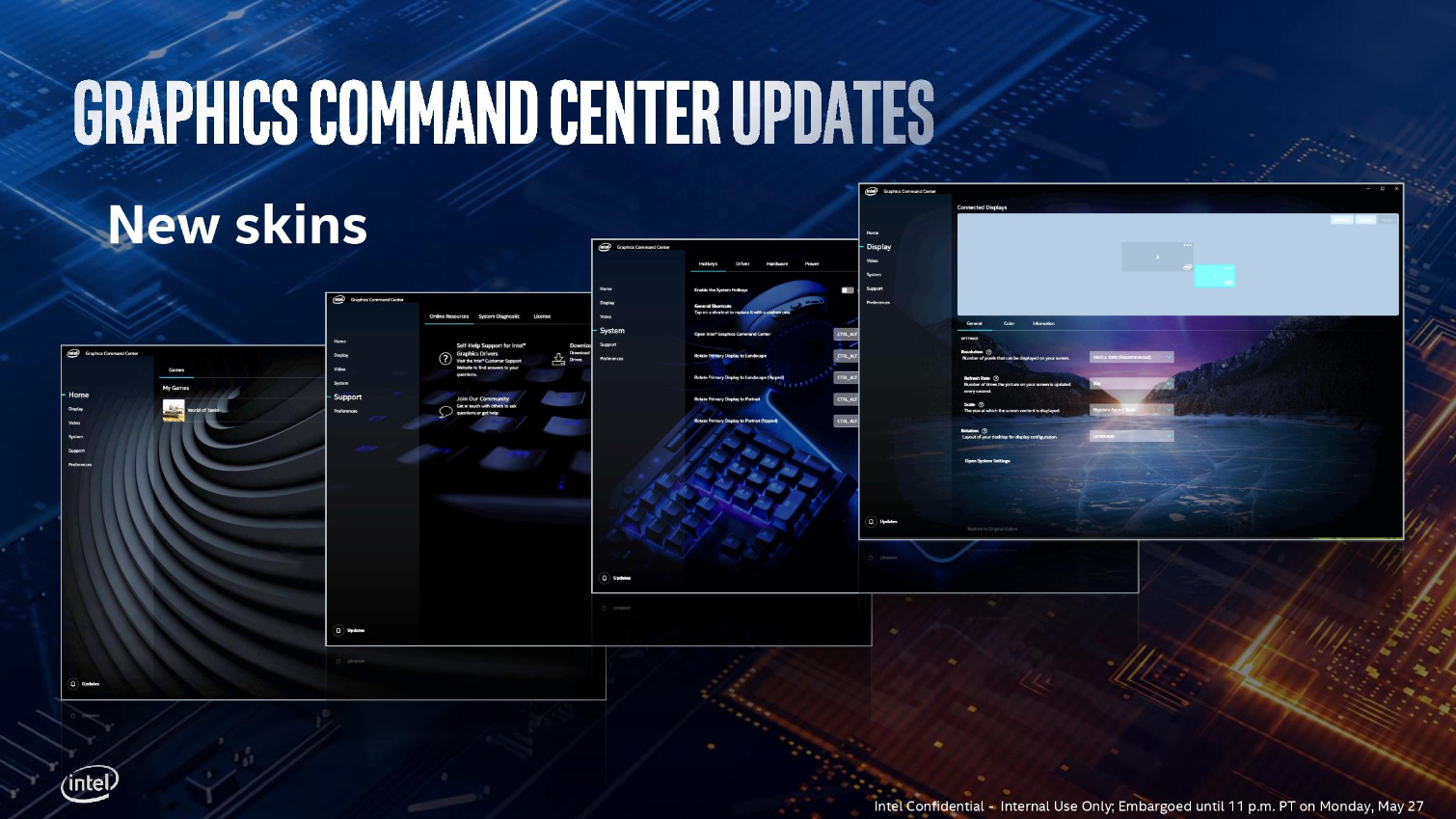
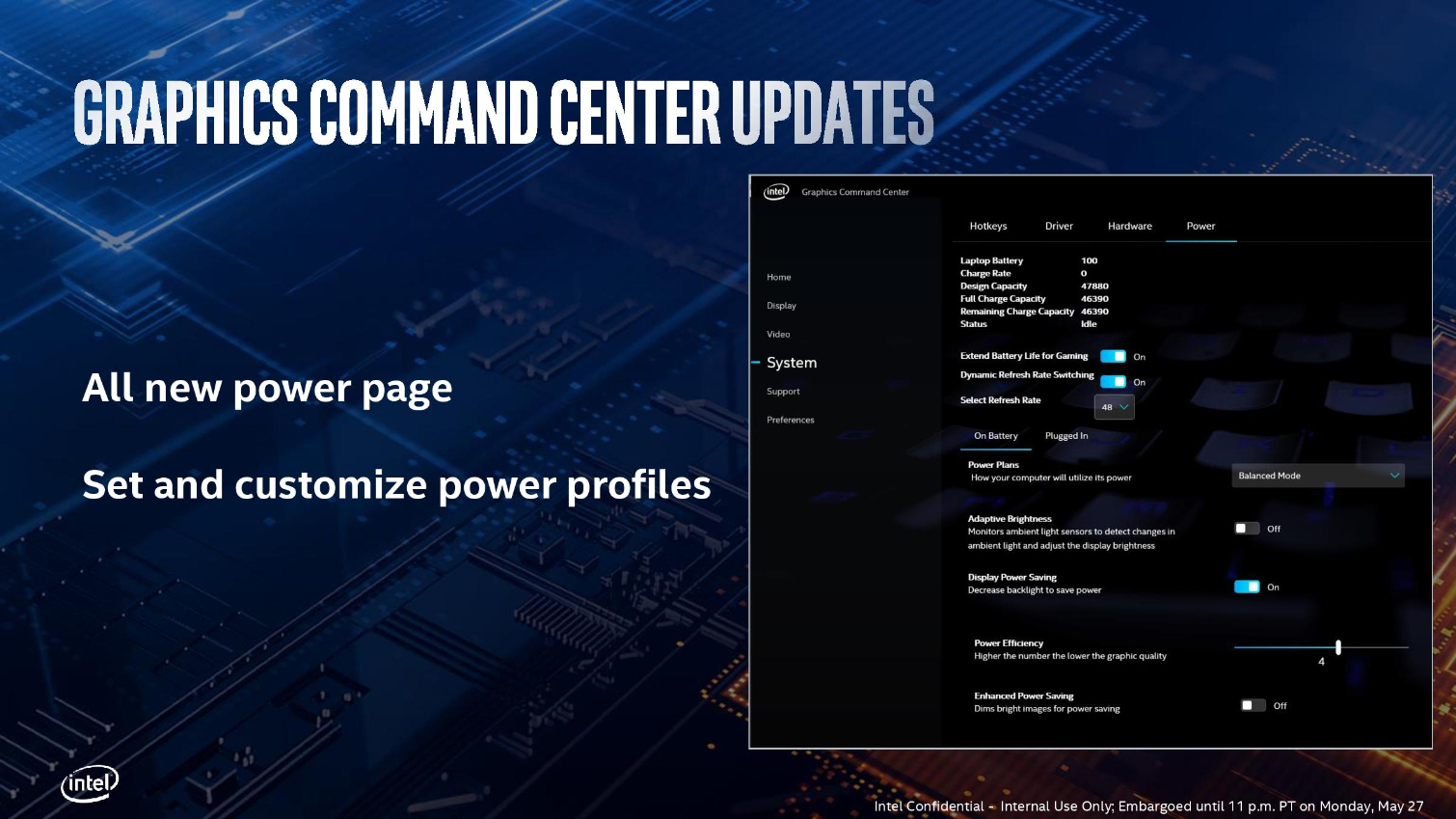

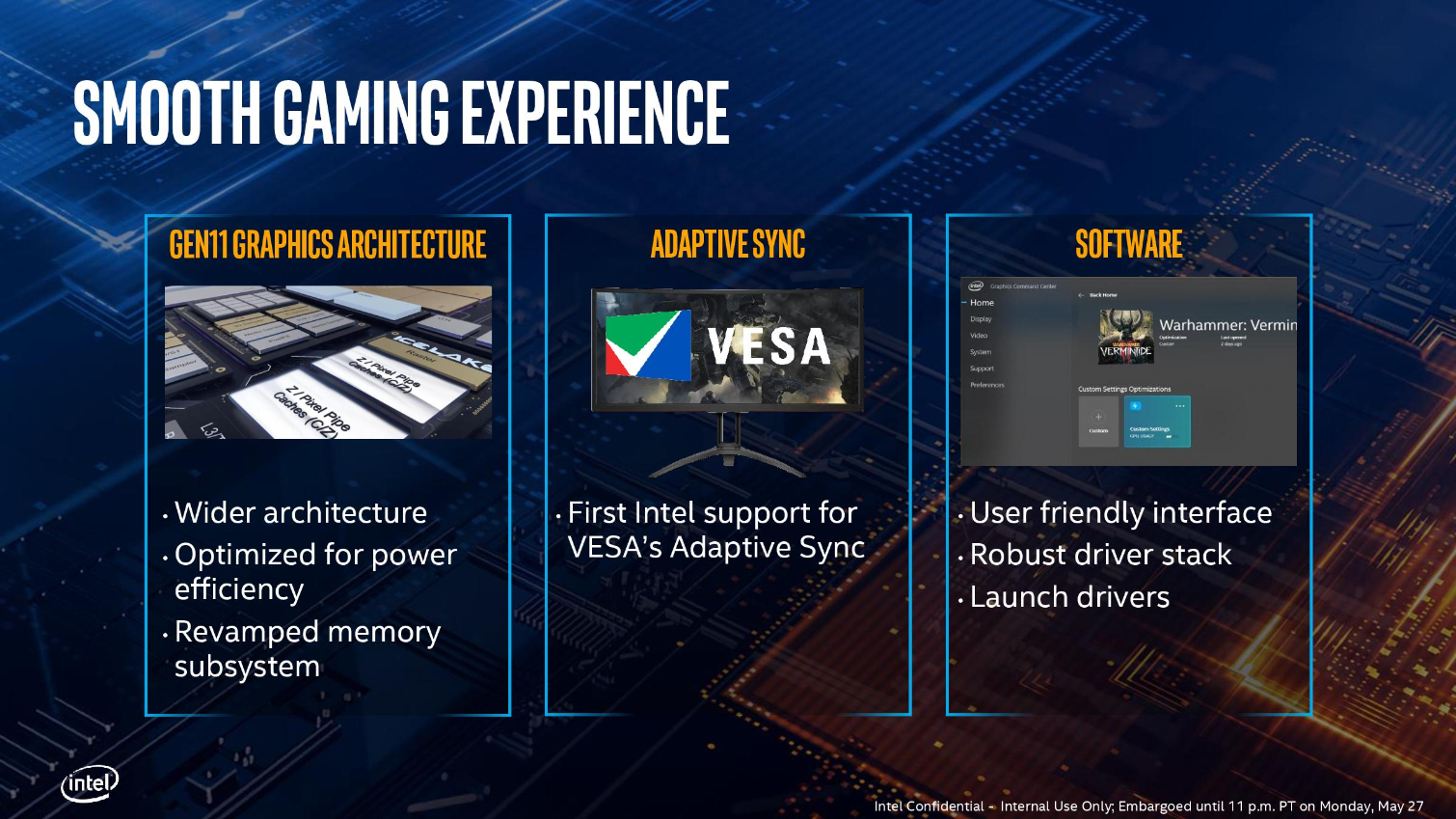
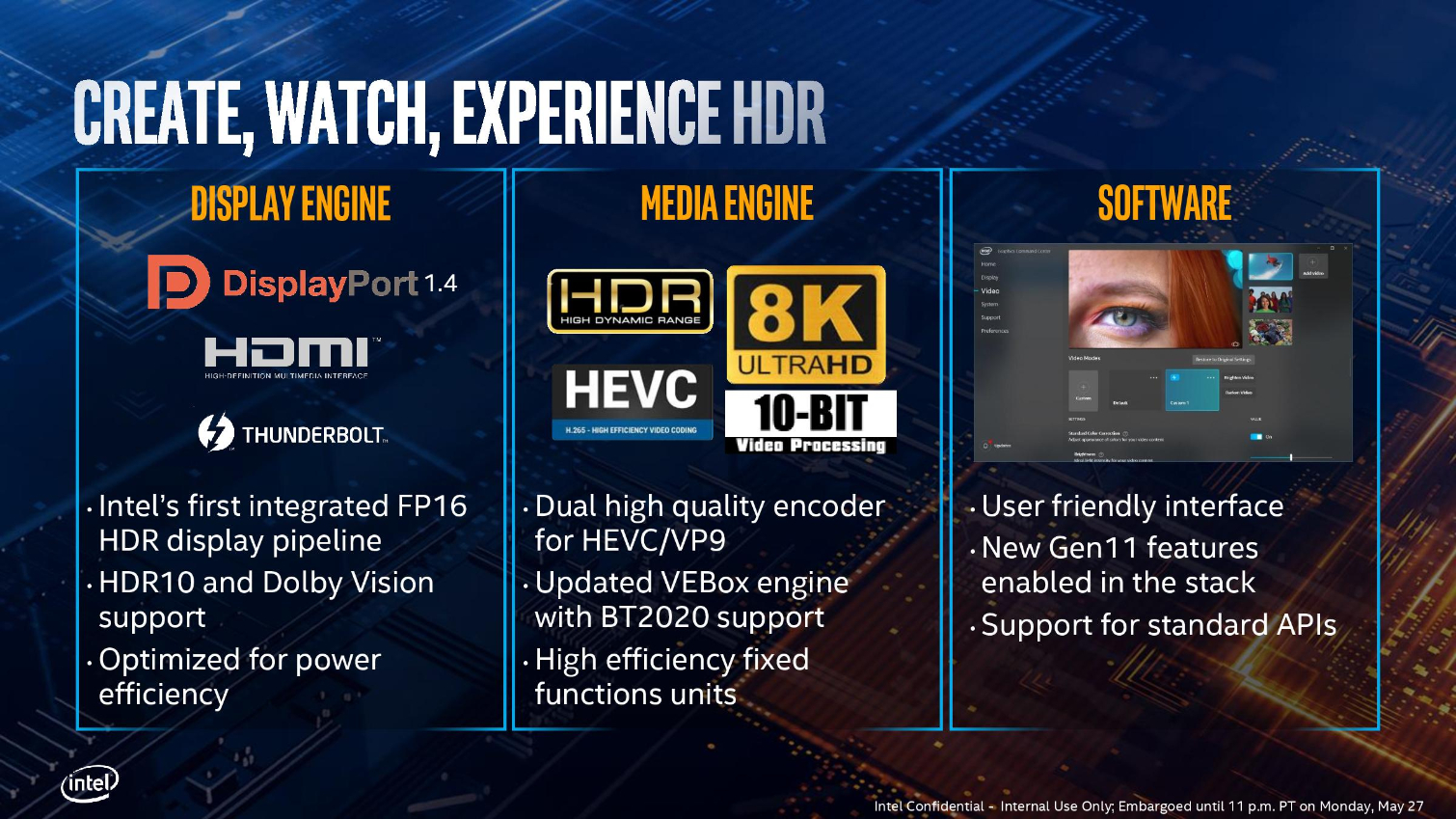
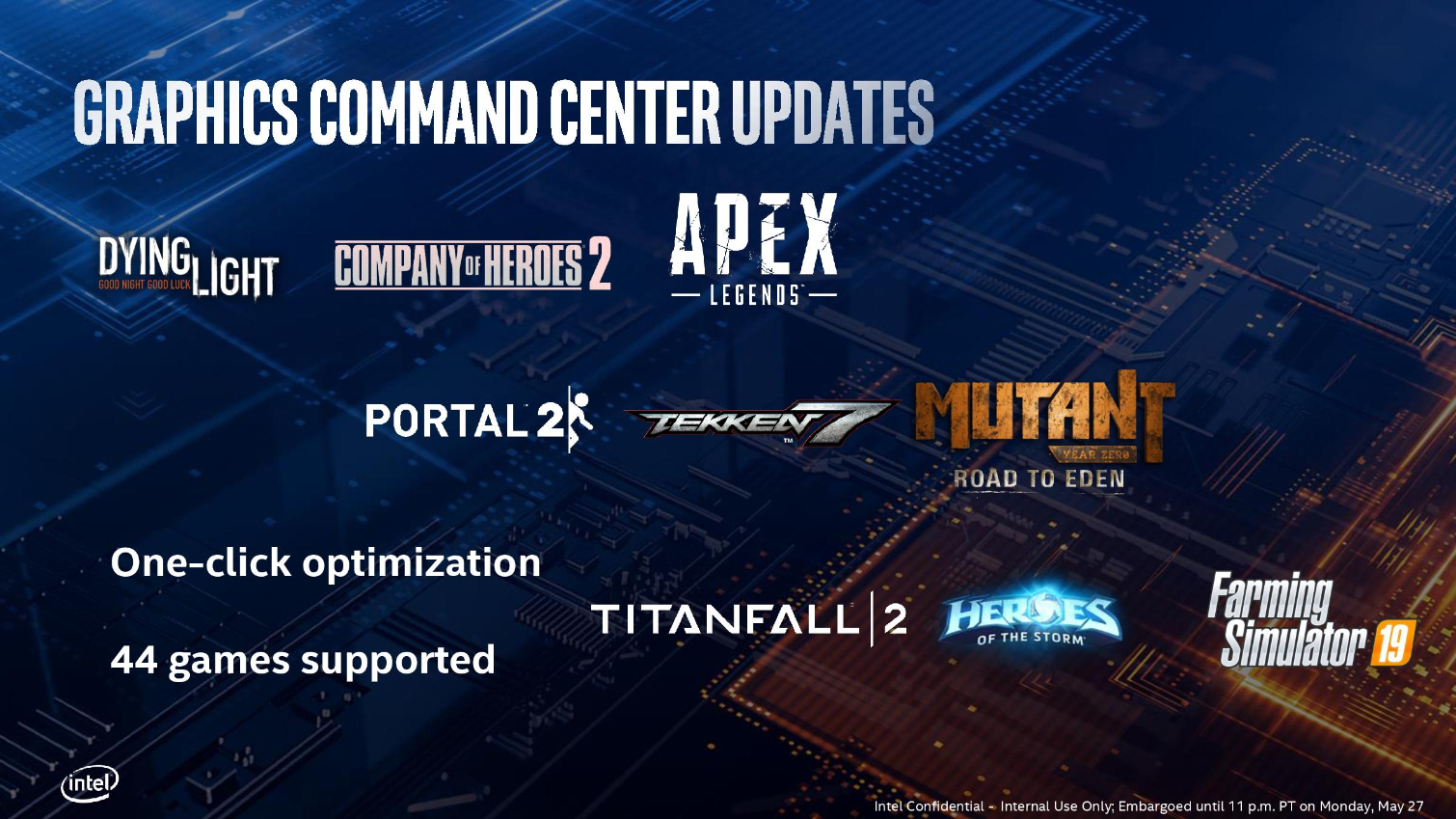

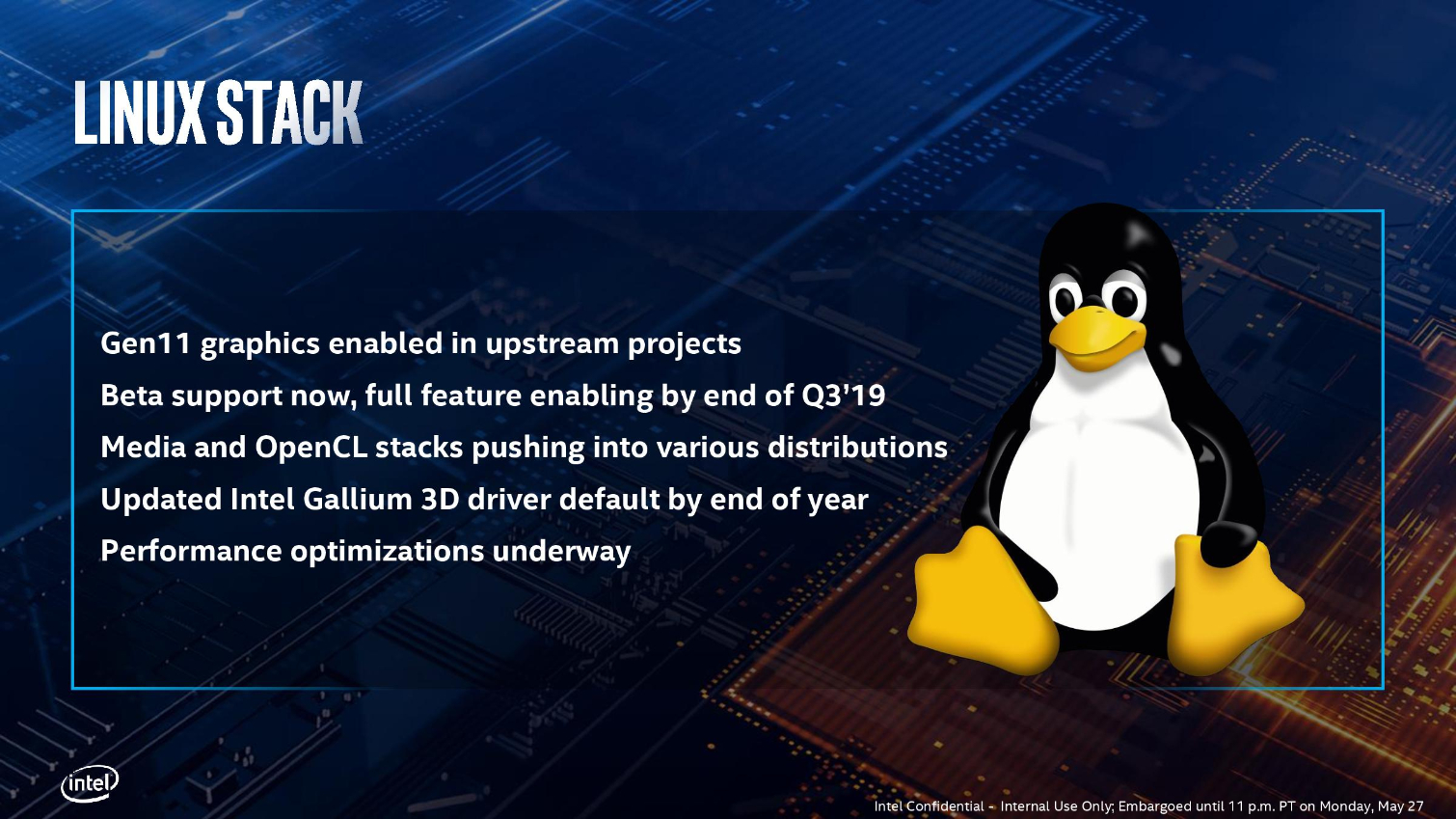

Intel says the Gen11 graphics unit features a significantly larger 3D engine to boost 1080P gaming performance above 30FPS into the 60 FPS range. The company has also improved the QuickSync video technology with dual HEVC encoders that can create and playback 4K HDR content. Gen11 is also the company's first integrated graphics unit to have adaptive sync and HDR-capable display pipes. It also supports HDR 3 and DPI 1.2.
Thunderbolt 3

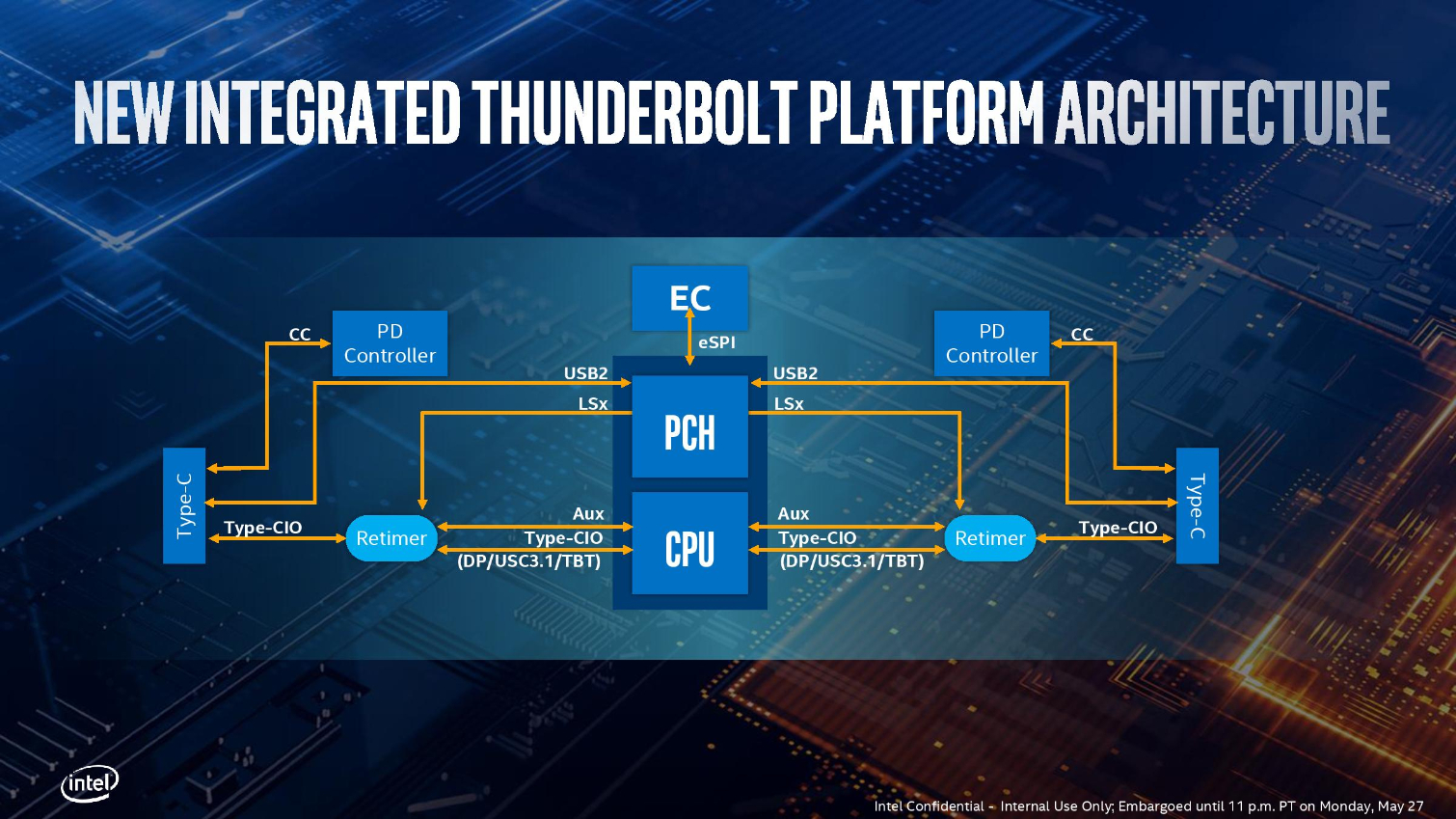

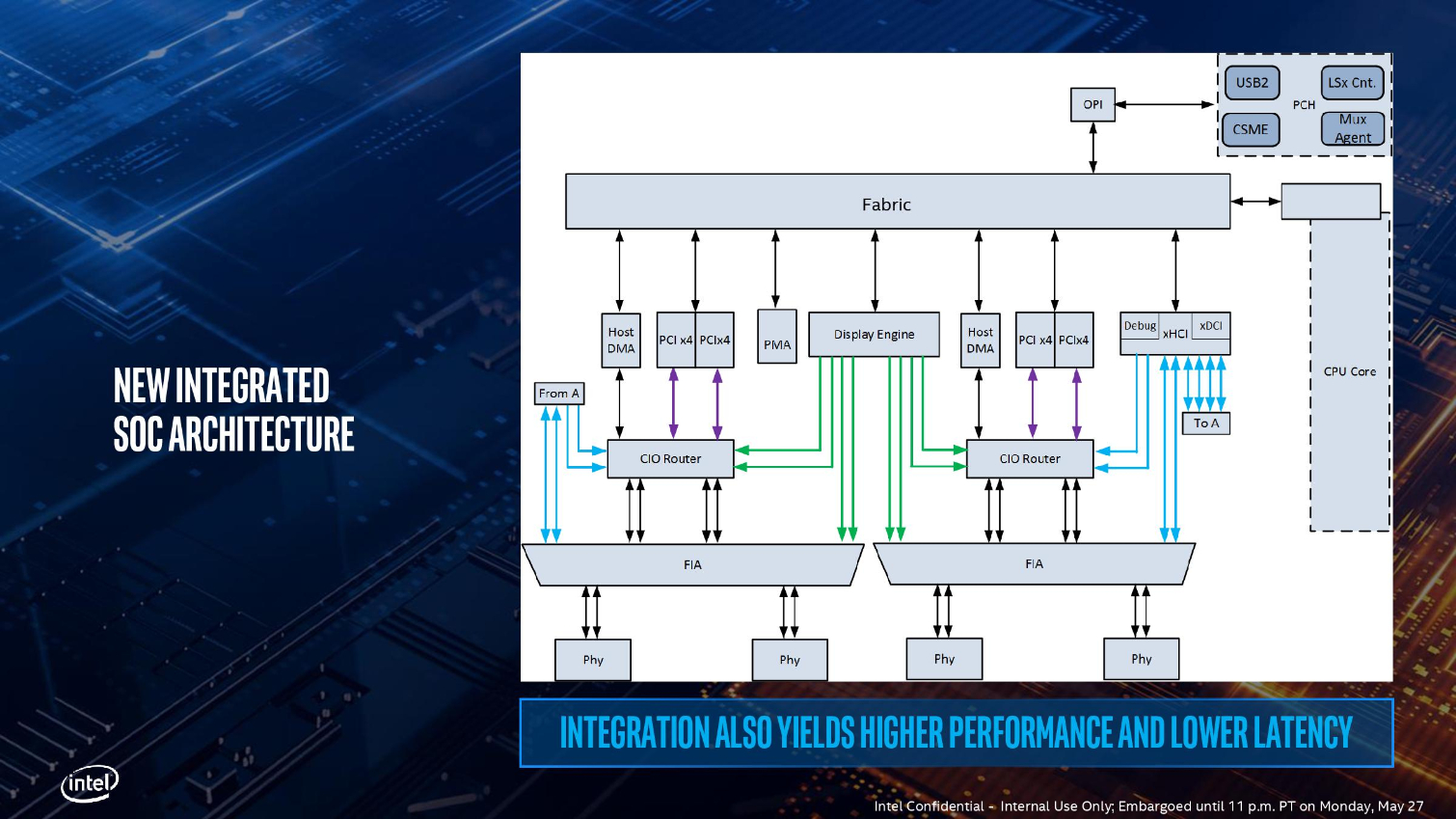
Thunderbolt has had limited support in many laptops, with ports usually being located on one side due to limitations. Intel designed a new dual-sided Thunderbolt 3 controller architecture that provides up to 4 ports, two on each side of the laptop. Due to space constraints most OEMs will still ship notebooks with two ports, but there will be models with expanded capabilities on the market soon.
Intel recently contributed the Thunderbolt 3 protocol to the USB committee so it could be integrated into the USB 4 specification. That should help broaden the number of devices, in particular on the peripheral side, that support the standard.
Intel says that it expects over 30 designs, each with multiple variations, to come to market. We're still waiting on a list of the processors for further analysis, and our laptop team eagerly awaits the first devices to hit our labs.

Paul Alcorn is the Editor-in-Chief for Tom's Hardware US. He also writes news and reviews on CPUs, storage, and enterprise hardware.
-
southernshark Talk about an Intel Fanboy.... This article was definitely written by one.Reply
"Intel's next gen graphics are well known..." Haha... that's funny stuff. No one has even seen the next gen graphics yet.
And as for IceLake, unveiling it and shipping CPUs aren't the same thing. I haven't seen any press release about desk top CPUs shipping in 10nm this year. -
Yawn. They can keep their overpriced junk. I am so sick of these fanboys writing articles as wellReply
-
Delicieuxz The article says:Reply
AMD claims that its new third-gen Ryzen products have exceeded Intel's Skylake single-core performance, long the hallmark of Intel's dominating performance, albeit by small 1 to 3% margins
Though, AMD's 1 - 3% performance single-threaded performance increase compares higher clock-speed Intel chips to lower clock-speed AMD chips. So, AMD's IPC could be more appreciably higher than Intel's. -
BaRoMeTrIc Replysouthernshark said:Talk about an Intel Fanboy.... This article was definitely written by one.
"Intel's next gen graphics are well known..." Haha... that's funny stuff. No one has even seen the next gen graphics yet.
And as for IceLake, unveiling it and shipping CPUs aren't the same thing. I haven't seen any press release about desk top CPUs shipping in 10nm this year.
Intel stated they won't ship 10nm desktop and server cpus until 2020 -
BaRoMeTrIc Reply
IPC doesn't change with higher frequencies. IPC and Frequency are 2 separate discussionsDelicieuxz said:The article says:
Though, AMD's 1 - 3% performance single-threaded performance increase compares higher clock-speed Intel chips to lower clock-speed AMD chips. So, AMD's IPC could be more appreciably higher than Intel's. -
Math Geek they had to do something to keep their fanboys busy until they can actually put out a new chip. some pretty ppt slides should keep them pretending for the next year :)Reply
but really an 18% increase should just about make up for all the losses due to patches for all the vulnerabilities the chips have. so i'd expect them to stay on par with where they are now overall. of course they'll not apply those patches when testing to make it look better. but hey who's really paying attention anyway......... -
kinggremlin ReplyAlistairAB said:So Intel has 18 percent IPC over 4 years, AMD does 15 percent in one year.
It's easier to improve on a 6 minute mile than it is a 4 minute mile. -
ingtar33 color me highly skeptical on those IPC claims.Reply
Intel's own IPC hasn't budged a percentage since skylake, yet their ipc graph in this press release claimed steady improvement in IPC thrugh the various skylake refreshes. I think they're playing games with the meaning of IPC again, like how they did when they would release any one of their skylake refreshes with identical ipc and claim massive ipc improvements, which were made by higher core counts and clock speeds, proving forever intel's definition of ipc is different from everyone else's. -
jeremyj_83 Reply
When Zen 1 was launched it had an IPC of Broadwell, which was about 5% less than the Sky Lake architecture. The biggest reason for the wide performance gap between them was Intel's huge clock speed advantage in single threaded applications. Zen+ increased IPC by 3% so now AMD was within 2% clock for clock with Intel. With Zen 2 we are getting a 15% IPC boost so AMD will have a 10-12% performance advantage over Intel at the same clock speed, or about 1-3% in ST with both CPUs at max boost. Saying that AMD was doing a 6min miles isn't correct at all, it was more like a 4:15 mile that they improved to a 3:45 mile in 2 years, where as Intel was at a 4 mile and moved to a 3:42 mile in 4 years. Now don't forget that Intel isn't releasing Ice Lake to the desktop until sometime in 2020. When you look at the top end GHz it maxes out at 4.1GHz whereas the i7-8665U hits 4.8GHz which means Intel is having a very hard time increasing the clock speed on the CPU. That is why they aren't releasing it on the desktop since it won't be able to clock high enough right now to beat their current i9-9900K.kinggremlin said:It's easier to improve on a 6 minute mile than it is a 4 minute mile.

